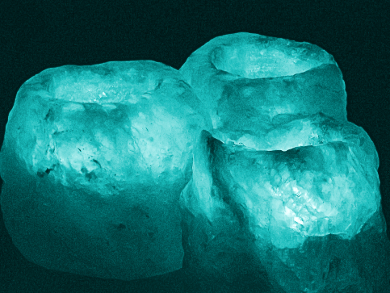Luminescent materials (phosphors) are used in light sources and displays. Often, transition metal or rare earth compounds, e.g., metal vanadates, are used. These materials are generally prepared using solid-state synthesis, which makes it difficult to control the morphology and microstructure of the resulting particles. However, tailoring the structure of the particles could help to develop phosphors for new applications.
Shinobu Fujihara and colleagues, Keio University, Hiyoshi, Japan, have developed an approach for the controlled synthesis of inorganic phosphors based on an immiscible liquid−liquid biphasic system. The team prepared an aqueous solution of barium acetate (Ba(CH3COO)2) and an organic solution of vanadium oxytriethoxide (VO(OC2H5)3) and layered the two solutions. The biphasic system was then heated at 80 °C. This approach allows for a controlled hydrolysis of vanadium alkoxide at the interface.
According to the researchers, Ba(VO3)2·H2O is formed as an intermediate, followed by precipitation of the phosphor Ba2V2O7 as a powder. The powder showed a broad-band visible emission upon UV excitation. Phosphor samples from this biphasic system exhibit much higher photoluminescence intensity than samples from a single-phase synthesis. The team attributed this to the different crystallinity and morphology of the particles.
The approach could also be used to prepare Ba2V2O7 films on surface-modified silica glass substrates. The researchers were able to control the films’ microstructures and, thus, their luminescent properties by using different coatings on the glass surface and varying the organic solvent.
- Liquid-Phase Synthesis of Ba2V2O7 Phosphor Powders and Films Using Immiscible Biphasic Organic–Aqueous Systems,
Mami Takahashi, Manabu Hagiwara, Shinobu Fujihara,
Inorg. Chem. 2016.
DOI: 10.1021/acs.inorgchem.6b00716




